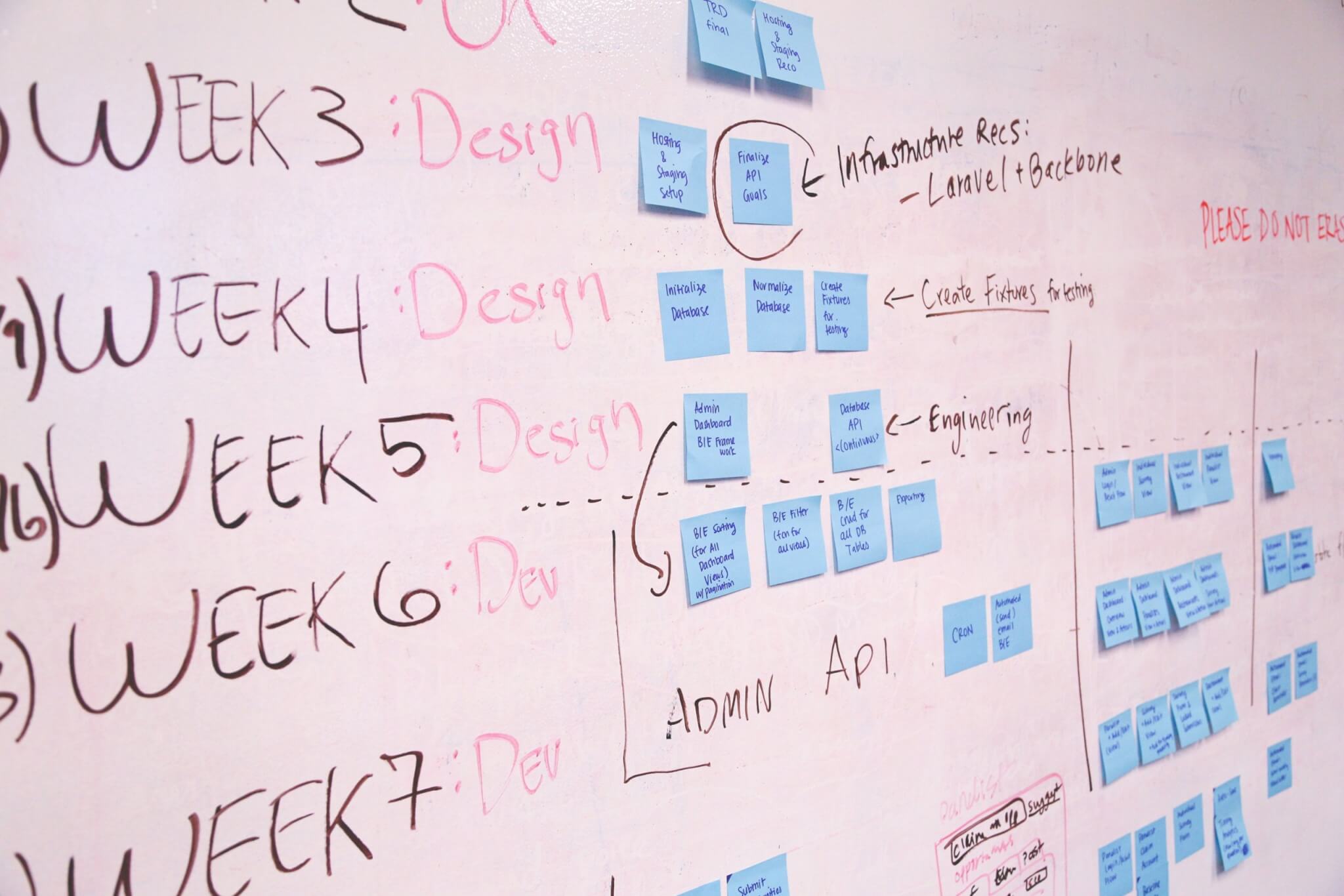Organizations and businesses work on multiple projects at the same time. Often, different teams work on the projects, and some people juggle either projects or tasks. In the past, projects were managed via pencil and paper. These days, businesses have the luxury of using project management systems.
There’s also a positive relationship between project management software usage and project performance. In fact, 87% of the highest-performing projects use some collaboration tools.
What does this mean? If your organization isn’t using a project management system yet, it’s time for a much-needed change.

Regina Ongkiko,
from LTVPlus
4 Reasons Why You Need Project Management Software
Not all projects are successful.
Did you know that 70% of organizations experienced at least one project failure in the last 12 months? Additionally, for every $1B invested in the US, $122M was wasted—because of poor project performance.
Since the use of project management software is related to project success, this only emphasizes the need to find the best one for your team.
Here are reasons why you should consider signing up for proper project management software for your team.
1. Ease of monitoring simultaneous projects and deliverables
The project management system allows your team to track the assignees and task progress at a glance.
Most software provide different options depending on your preference. For example, you can choose how to view projects based on status:
- what’s in progress
- what needs to be reviewed
- what’s done
You can also have a Gantt chart or timeline view to track schedules.
Having a complete view of the project’s progress, you can prevent bottlenecks and adjust due dates if anything unexpected happens.
The suitable project management software will ensure that projects are monitored and tracked—and that’s already a significant step towards productivity.
2. Effective collaboration among team members
That’s a fact: many people are working on a project. So internal communication via comments and feedback needs tools to collect and organize them. A project management system delivers it and helps in documentation and communication among team members.
Additionally, each team member has access to any updates and progress, ensuring that everyone is aligned. Some tools also allow the users to create workflows and other automation for more efficiency.
3. Access to planning and scheduling tools
Project management software has different ways of managing tasks and deadlines. You no longer have to buy a subscription to multiple apps. Just get one software that has what you need.
Most product management tools deliver the following features:
- Switch views according to function or style
- Assign large teams to a big project
- Create sub-tasks and checklists
- Setup dependencies and blockers
- Visualizing timelines and schedules
- Integrate with other services and apps
4. Proper resource allocation
Some project management tools support agile methodology, using sprint points to track capacity. It’s crucial to measure team productivity and individual performance, so you got reports to track and analyze those aspects. During planning and strategy sessions, you can refer to these reports to help you decide how to allocate resources such as team members, time, and even budget.
Project managers can use these insights to determine bottlenecks, capacity, prioritization, and adjust the workload to the capabilities of your team.
5 Factors to Consider When Choosing a Project Management Software
There's no lack of project management systems available on the market. Different tools have different stand-out features. Here are the top 5 factors you need to consider when selecting your product management solution.
1. What does your team need help with?
The first step is identifying the problems, challenges, and constraints.
Some teams are more focused on managing a strict workflow, while others look for a better way to communicate within tasks and projects. Meanwhile, some companies need help with monitoring schedules and timelines.
As you go over a list of potential project management systems, ask yourself: Will it solve your problems? If you say “no,” then remove this option from your list right away.
2. What features are available?
Reviewing the toolset of every product management software available can be overwhelming. To help you, here’s a list of features that most software have—though they have different ways of approaching and presenting it.
- Project dashboards - Get a bird’s eye view of active, in progress, and completed tasks. Some tools also have percentage views to see how far the project is.
- Task and project management - These features help you assign people and sort tasks according to priority, assignee, or due date. Some collaboration tools have features for marking dependencies and blockers automatically.
- Scheduling features - Create Gantt charts, timelines, and calendars without leaving the software. While some product management systems are limited to creating the charts alone, others also allow you to create tasks and projects right from the timeline.
- Communication features - A built-in messaging allows team members to communicate by commenting, mentioning, and @-tagging in tasks.
- Integration capabilities - Some project management systems can be integrated with various tools and applications for seamless alignment of your business workflow.
- Customer support - It’s perfectly normal to now know any software like the back of your hand right away. Or you may have some questions while setting it up for your team.
Once you have a better understanding of these features, list out your top 3 must-haves. Then, you can go over your list of options and match these features with your requirements.
The key takeaway here is to ensure that these features help solve the needs you’ve identified.
3. How much is your budget?
Since a project management system is an investment, it will cost a lot of money.
There’s also no one way to determine your ROI for using a project management software—it’s a long-term process that involves a lot of other factors too. Your goal is to go with the project management software that will be worth the price.
It’s just important to consider the price per user and compare it to your current resources. Also, think about the best way to handle the recurring payment—should you go for monthly or annual billing?
4. How easy is onboarding?
Remember that you’re adopting a project management system to help your team—so all team members should find their way around the tool easily. There will always be a learning curve, it should not be too complicated that it turns away the users.
Also, consider how the software can be used across devices since most individuals also work on tablets or mobile phones. Ease of use is the most important quality for mobile applications, as shared by 97% of users.
If you don’t choose software that your team can easily use, you’ll only end up with more problems rather than solutions.
5. What does your team have to say?
Finally, getting your team to vouch for your decision is essential. Some things you can try:
- Conduct a survey or set consultations with key members
- Meet with different department heads to get their concerns and insights
- Schedule a demo of the tool to get real-time feedback
- Sign up for free trials and get a few team members to test them out
7 Project Management Systems to Choose from
Monday.com
Used by companies like BBC Studies and Coca-Cola, monday.com has a wide range of features to help teams manage their resources and projects via time tracking, collaboration tools, and integrations with other apps.
Teams can also customize the view depending on their method—whether it’s Kanban or a different method. Plus, there are a lot of workflow tools that can help automate a lot of your processes.
Asana
Asana offers features designed to make the most of your productivity. The Activity Feed lets users stay up to date on what’s happening, and its Smart Inbox basically enables teams to say goodbye to email communication.
Its Focus Mode helps teams focus on productive tasks which are then broken down into smaller chunks like subtasks and checklists.
Asana is generally best for big projects because it allows you to track due dates, goals, and milestones, allowing you to monitor and celebrate wins.
ClickUp
ClickUp is very feature-rich as it aims to target small, medium, and corporate businesses. Users can plan projects, create timelines, manage sprints, create checklists, and even manage content calendars.
Because of its robust list of features and level of customizability, this is great for big companies with different teams that have different processes. Finance teams, HR teams, marketing teams, and even sales teams will be able to customize the workflow of their dreams.
Though it can be overwhelming because of its seemingly unlimited features, most teams will always find a dashboard and a view that works best for them.
Wrike
If you aim to keep your team small and intimate, Wrike is a good choice. It offers basic integrations with other business platforms, and just recently came up with new groundbreaking features.
For example, it uses machine learning to alert the right people if a project is already at risk to be delayed. It also points to the areas that are causing the issues.
Smartsheet
Do you work with spreadsheets a lot?
Smartsheet is like Excel on steroids—it performs all calculations across multiple sheets, and even offers additional features like workflow automation and visualization of tasks. There’s also the Critical Path feature which shows you all the tasks that directly affect your due dates.
Jira Software
Jira Software might be your best bet if you’re already using the Agile method. It’s flexible enough to use the Kanban view and leaves the option open to use custom scrum boards. Tech teams can maximize Jira’s features which help track bugs during software development. Non-tech teams can maximize Jira’s integrations and workflow customization.
Trello
If you’re managing a small team, Trello is a great start. It’s a very simple and straightforward project management software. Even its free version can already help facilitate teams.
It’s based on Kanban boards and cards that you can customize according to how you want to sort your tasks. It’s very user-friendly and intuitive, but maybe lacking for bigger teams and complicated long-term projects.
Which Project Management System Is Right For You?
Again, there are a lot of options out there for project management solutions. It can be overwhelming trying out all these different software in your quest to choose the best one.
With the criteria above as your guide, just keep one more in mind. The right tool is the one that will improve your systems and complement your culture. Value the insights from your team, and you’ll be led to the right decision.
Have a data migration in mind?
Let's migrate PM data together!


